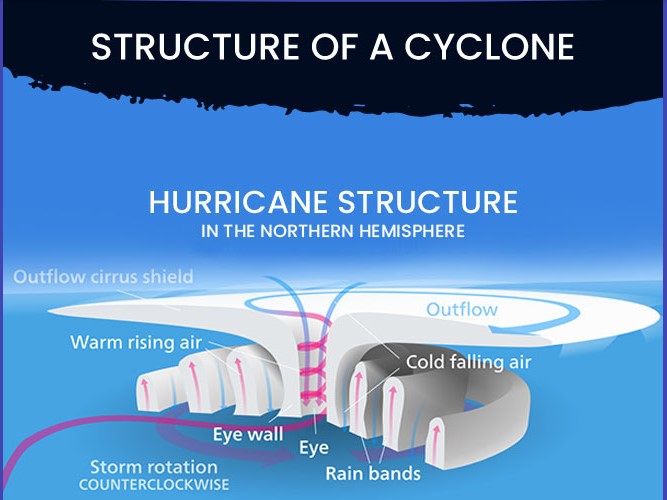The India Meteorological Department (IMD) recently reported that Cyclone Fengal, tropical cyclone made landfall over Puducherry.

A ‘direct hit’, refers to a situation where the core of high winds (or eyewall) comes ashore but the centre of the storm may remain offshore.
References
The Union Cabinet recently approved the One Nation One Subscription (ONOS) initiative.
India spent around Rs. 1,500 crore on subscription for electronic and print journals in 2018 and Rs. 995 crore on journal subscriptions in 2022.
References
The researchers recently explored superconductivity in twisted bilayer tungsten diselenide (tWSe₂).
Recent Findings
Sublattices are smaller grids of groups of atoms within the material.
The transition temperature is the critical value below which a material enters the superconducting state, exhibiting zero electrical resistance. Conventional superconductors transition at around –250º C.
Reference
The Hindu | New moire superconductor
As per the Centre for Environmental Planning and Technology (CEPT) data the vegetation of Girnar Wildlife Sanctuary had declined from 2000 to 2020.
Recent Findings
|
Asiatic Lions |
|
References
Recently, an Ajmer court has admitted a petition that a Shiva temple lie under the Sharif dargah shrine of Khwaja Moinuddin Chishti in Rajasthan.
The Chishti order was founded in the 10th century by Abu Ishaq Shami in the town of Chisht near Herat.
|
Disciples |
Year |
Contributions |
|
Qutbuddin Bakhtiyar Kaki |
1173-1235 |
Established the Chishti order base in Delhi. |
|
Baba Fariduddin |
1173-1265 |
Spread the Chishti order’s teachings in Punjab. |
|
Hamiduddin Nagauri |
1192-1274 |
Served as a spiritual leader in Nagaur. |
|
Nizamuddin Auliya |
1238-1325 |
His teachings and shrine in Delhi. |
|
Chirag Dehalvi |
1274-1356 |
He spread Moinuddin teachings after his death. |
The Urs festival is an annual festival held at Ajmer in Rajasthan which commemorates the death anniversary of Sufi saint Moinuddin Chishti.
References